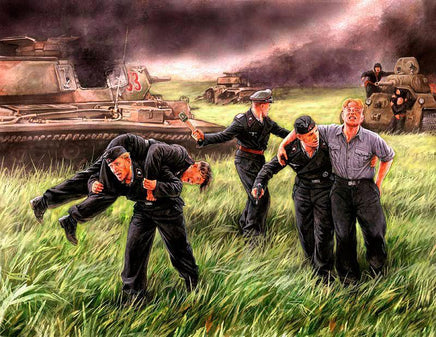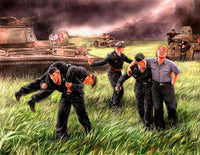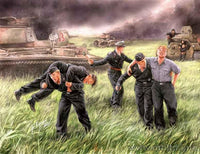The Battle of the Kursk (German code name: Operation Zitadelle) is widely recognized—not quite accurately—as the largest armored battle in World War II and the largest armored battle on the Eastern Front. It happened after the German defeat at Stalingrad in February 1943, but also after the successful German counter-offensive at Kharkiv in March of the same year. The German side, joining the battle, counted on the full acquisition of the strategic initiative, on the task of the Soviet side with the greatest possible losses, as well as on the nipple of the Soviet offensive expected in the summer of 1943. The Red Army adopted a defensive stance, trying to bleed the attacking Germans out of the blood in the initial phase of the operation and then proceeding to a counter-offensive. The battle on the Kursk arc began on July 5, 1943, and along with the Soviet Orłowo and Belgorod operations, it lasted until August 23 of the same year. In its course, despite the involvement of significant forces by the German army and the newest Tiger and Panther tanks, as well as the Ferdinand tank destroyers, the Soviets achieved victory. They prepared themselves very well for this battle, and despite suffering huge losses, they were able to go to the counteroffensive. The Battle of the Kursk region turned out to be one of the turning points in World War II. It is estimated that as a result (from July 5 to August 23), the German army lost approx. 240,000 soldiers—killed, wounded and captured, approx. 1,300 tanks and approx. 1,000 aircraft. The losses of the Red Army were undoubtedly greater.
The first tanks in the German army appeared at the end of World War I - these were the A7V machines. After the signing of the Treaty of Versailles, the German armed forces were forbidden to develop armored weapons, but the German side did not honor these restrictions and secretly developed armored weapons. However, after Adolf Hitler came to power in 1933, this development became fully official, and in 1935, the 1st Armored Division was formed. In the period 1935–1939, further divisions were formed, and their main equipment was the Pz.Kpfw cars: I, II, III, and IV. A single armored division at that time was composed of a tank brigade divided into two armored regiments, a motorized infantry brigade, and support units, among others: reconnaissance, artillery, anti-aircraft, and sappers. It consisted of about 300 tanks in full. It is also worth adding that the German armored forces (German: Panzerwaffe) were trained and prepared to implement the doctrine of lightning war and not, as in many armies of the time, to support infantry activities. Therefore, emphasis was put on training "pancerniaków" on the interchangeability of functions, independence in decision-making by officers and non-commissioned officers, and the best technical mastery of the tanks owned. All this resulted in the great successes of German armored weapons in Poland in 1939, but especially in Western Europe in 1940. Also in the course of the fighting in North Africa, especially in the period 1941–1942, the German armored forces turned out to be a very difficult opponent. Before the invasion of the USSR, the number of German armored divisions almost doubled, but the number of tanks in these units decreased to about 150–200 vehicles. Also, in the course of the fighting on the Eastern Front, especially in 1941–1942, the German armored forces were superior in training and organization to their Soviet opponent. However, contact with such vehicles as the T-34 or KW-1 forced the introduction of the Pz.Kpfw V and VI tanks to the line in 1942 and 1943. Growing losses on the Eastern Front, as well as lost battles at Stalingrad or Kursk, made the German Panzerwaffe weaken. Its structure included heavy tank battalions (with 3 tank companies), and in 1943, armored grenadier divisions were established. There was also an increasingly clear advantage for the Soviet side, and from 1944 on, there was a need to simultaneously fight the Soviet troops in the east and the Allies in the west. It is also assumed that it was then (in the years 1944–1945) that the training of the German armored forces was weaker than in the previous period and did not constitute such a significant advantage on the German side as before. The last large-scale operations of the German Panzerwaffe were the offensives in the Ardennes (1944–1945) and in Hungary (1945).
















